Newsletter
Newsletter 70 - November 2013
The Autumn Meeting in Utrecht on Sunday 13th October 2013.
Despite the KNMI, the Dutch Meteorological Office, Code Orange (!) warning of extremely bad weather that day, around 35 members of our society met together in the conservatory of the Utrecht Botanical Gardens. Coffee and cake helped many revive somewhat after an extremely wet and windy journey. In the meantime the plant tables were filling up with the many bromeliads that members had brought along for the lottery and the display table with the ones they brought for the plant discussion.
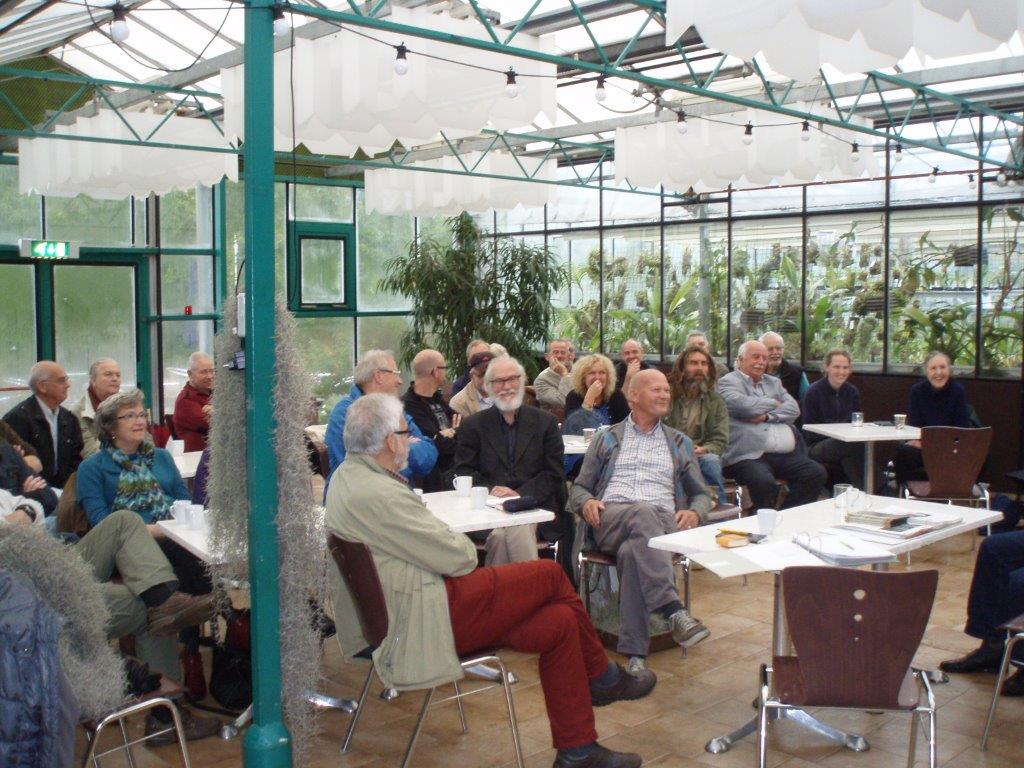
|
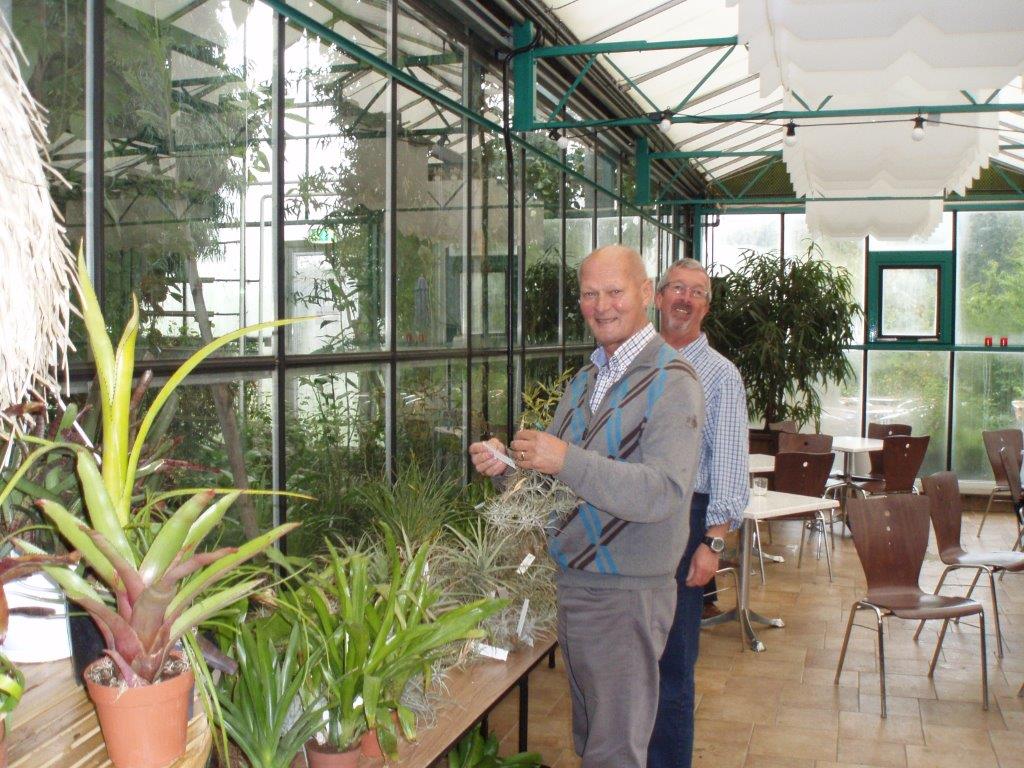
|
At around 11am the chairman, Eric Gouda, opened the house-keeping meeting with a hearty welcome for all those present and in particular for the two new members, Daan Smit, past hortulan of the Free University in Amsterdam and Ernst Kamphuis, in charge of the greenhouses at Burgers Zoo. He then went on to the announcements and items received.
He started by saying that our society (the BCG) has now arranged a so-called Corporate Membership of the DBG (The German Bromeliad Society) like the one we already have with the BSI (Bromeliad Society International]). We will exchange publications and reports so that the members of both societies can see them. One of our members now translates our newsletters into English so that they can be sent to both the DBG and the BSI. The magazines we get from the BSI and the DBG are available for the BCG members to borrow. From his own experience, the chairman can heartily recommend attending one of the DBG meetings in Germany.
The next item was the communication from the BSI concerning the archived materials currently held at, and managed by, the Marie Selby Botanical Gardens. These archives, that include the Michael Spencer and the Mulford Foster collections, are being transferred to the University of Central Florida (UCF). They will then be accessible at no charge to scientists and to members/interested persons anywhere in the world. The BSI wants to contribute towards the costs involved in the transfer of all the material to UCF and the subsequent management of it by UCF and is asking its affiliates, and so our BCG too, if they are willing to make a donation. The chairman then described some aspects in more detail and asked for views. From the discussion it appeared that the majority of those present thought they were unlikely to be very interested in the developments as sketched and it was decided that no donation would be made.
The chairman then asked everyone to consider the alternative Tillandsia Identification Key that they had all been sent recently and to send him their views/comments.
The DVD version part 3 of the Encyclopaedia of Bromeliads now available. Details are on the BCG website.
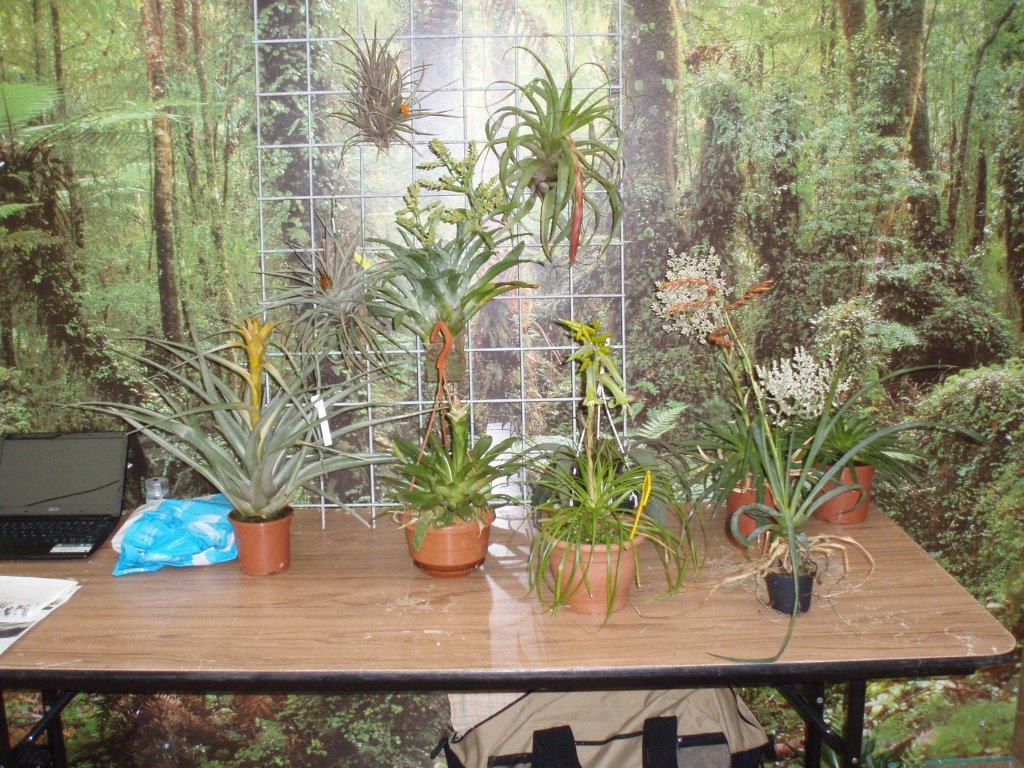
|
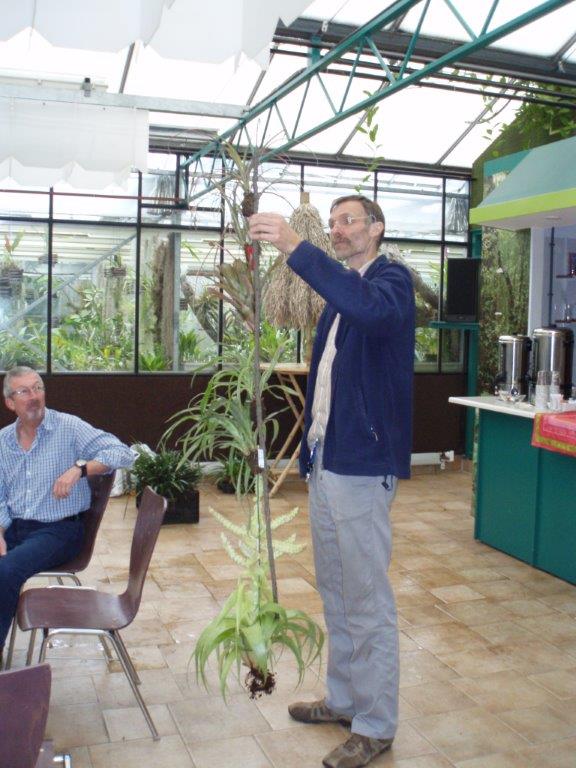
|
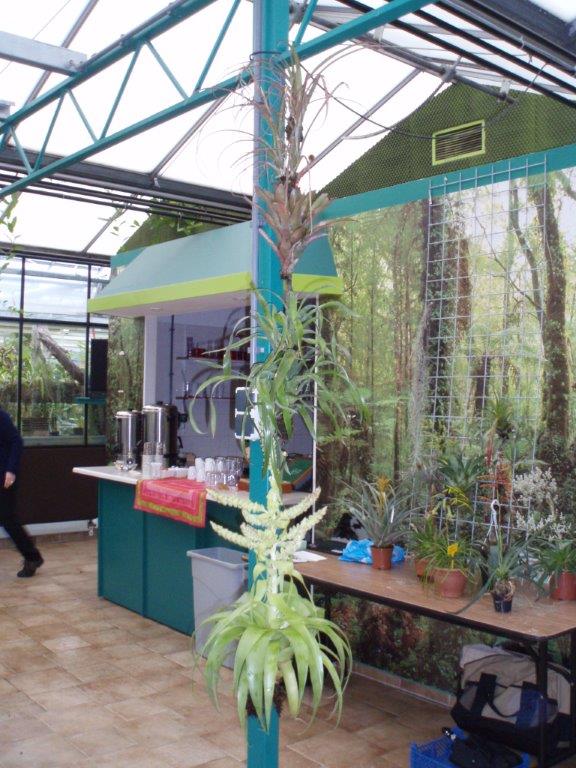
|
Various financial and organisation questions were then considered before discussing the 2013 excursions and suggestions for further ones in 2014. The visit to the IBES nursery on the 25th of May was a great success and certainly should be repeated. The one to Burgers Zoo was an equal success. For 2014, the suggestion of a visit to the restored tropical greenhouse complex at the Leiden Botanical Garden, recently re-opened by Queen Maxima, was greeted enthusiastically. More details to follow.
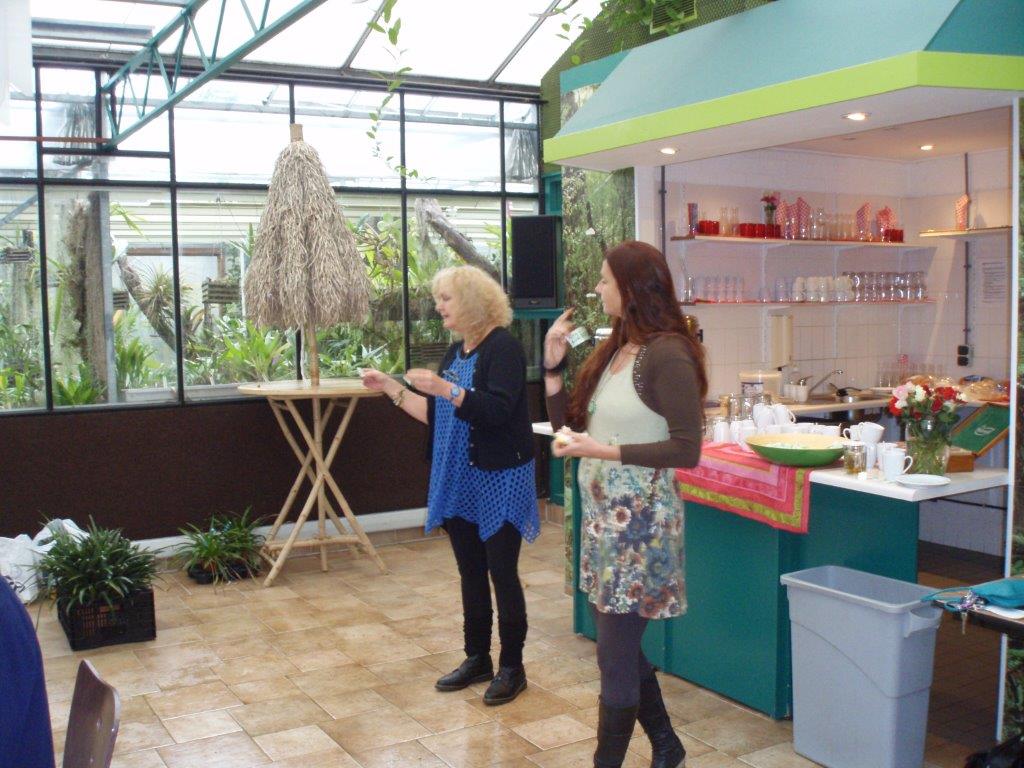
|
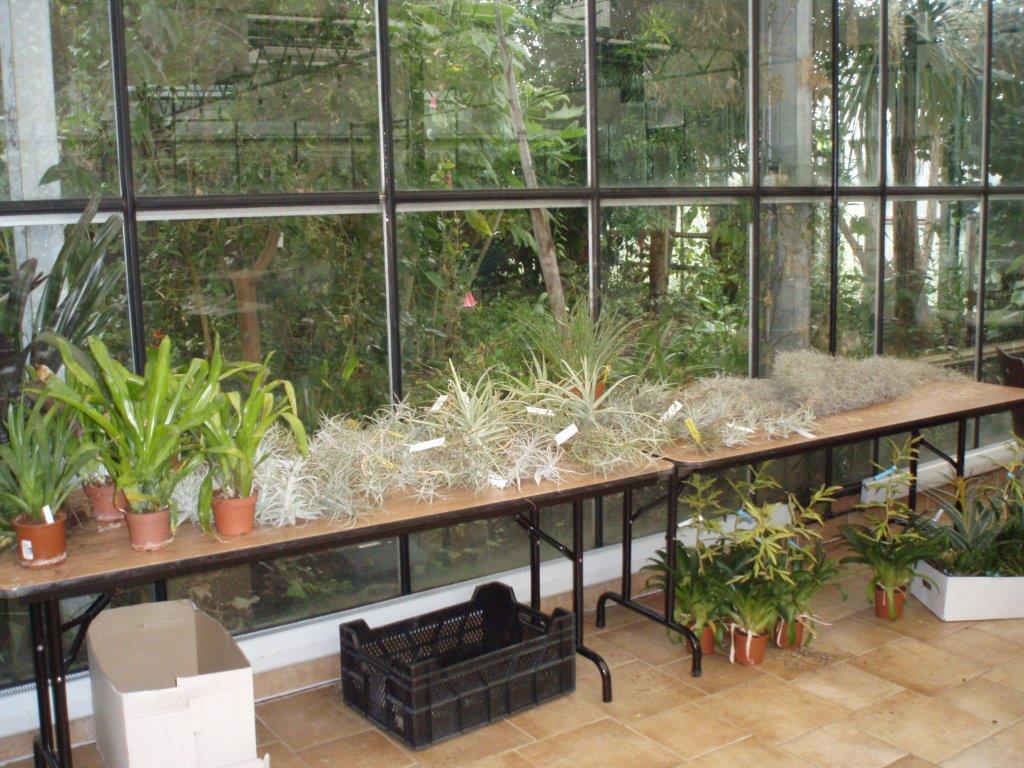
|
The chairman then moved on to Other Business. He announced that the Spring and Autumn meetings for 2014 would be on Sunday April 6th and Sunday October 19th, respectively, and would again be in the Conservatory of the Utrecht Botanical garden.
Hugo Claessen had some news about an energy-efficient grow light. He told us about it like this. "I am currently experimenting with a gas-filled Xenon lamp, the only lamp so far with a spectrum like that of sunlight. The lamp has a colour temperature of 6000°K and a spectrum from 190 nm to 30000 nm thus ranging from the UV area to far in the IR. Measurements have shown that at a distance of 50cm the lamp gives 256 µW/cm² and at 1m 80 µW/cm². The lamp I used is 35W, giving 8X as much light as a similar wattage CFL. The lamp does need to be mounted in a holder with a good reflector. The actual UV measurements were rather disappointing as the resulting lamp has a protective glass covering tube, which stops practically all UV transmission, but we shall find a solution to this if necessary. (1 µW/cm² - 1 µW/cm2 = 6,8 Lux = 6,8 lumen/m²). An orchid grower is currently experimenting with this lamp as, according to him, there are some varieties that will not flower if they do not get any UV. After some experimenting, we managed to get the lamp to light using an old laptop power-supply (voltage from 8 to 18 volt, 50W). I shall report later on the results of the experiments at one of the next meetings" Hugo said.
The chairman once again asked the members to write something for our Society's WIKI document (currently only in Dutch).
This ended the house-keeping meeting and we moved on to Eric Gouda's discussion of the plants members had brought. First of all, Eric showed us several variants of Tillandsia usneoides, which can take various forms depending on the circumstances in which it is grown. He then showed us the really very lovely Tillandsia ericii with its showy orange flowers. Eric got it to flower by first enclosing the plant for a week in a plastic bag together with an apple. The ethylene gas produced by the fruit stimulates many bromeliads to flower. Piet van Beest had brought the species Tillandsia elvirae-grossii, named for Elvira Gross who was assistant to prof. W.Rauh in Heidelberg and died sadly young. Catopsis hahnii, brought by Roel Tomassen, turned out to be a larger variety of Catopsis morreniana. He had also brought a probable cultivar, Tillandsia velutina X fasciculata. Peter Bak brought a tillandsia he had got from grower De Leon under the name Tillandsia capitata “Maya Gold”. This is a very attractive cultivar which also grows well in a pot. The ochre-yellow inflorescence is a real eye-catcher! Eric explained that the varieties T.capitata and T.brachycaulos, among others, have often been crossed and it can be hard to retrieve exact details. Hans Willems had a fine example of Tillandsia biflora. Hans van der Hoeven had brought a lovely, flowering Aechmea longifolia (syn. Streptocalyx longifolia). Eric then went on to discuss a Tillandsia tenuifolia that he suspected was a cross between T.tenuifolia en T.montana. The Tillandsia araujei he showed also seemed to have something of T.tenuifolia about it. The Tillandsia gardneri shown was also very attractive. Lastly came the artificial "tree" brought by Gerard van Heusden that was planted with various bromeliads including Billbergia nutans, Billbergia X windii, Aechmea pinelliana. These epiphytes had used their aerial roots to anchor themselves very firmly to the (plastic) "tree". Great fun to see.
During lunch, as always organized superbly by the Gouda family, the many plants brought by members and by the Bak nursery were raffled. To the accompanying beat of the heavy rain on the conservatory roof and the voices of the ladies Gouda and Brinkkemper soaring above it announcing winning numbers, most members were one or more new plants richer.
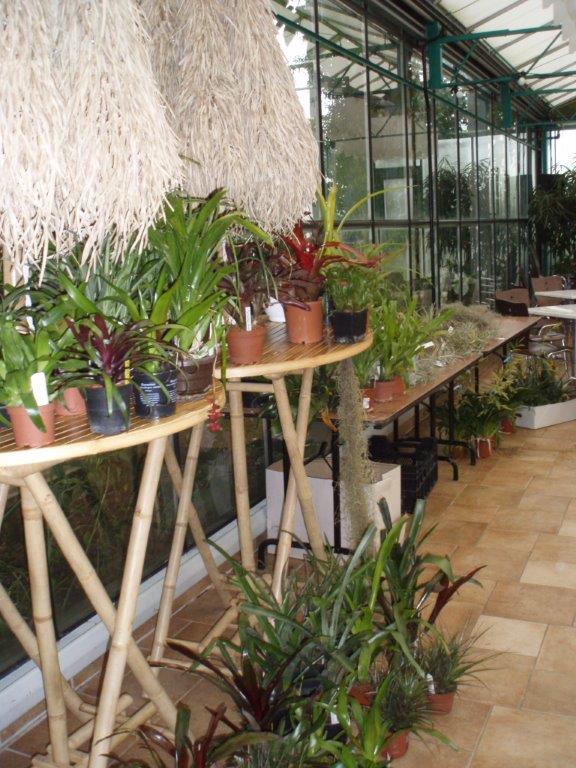
|
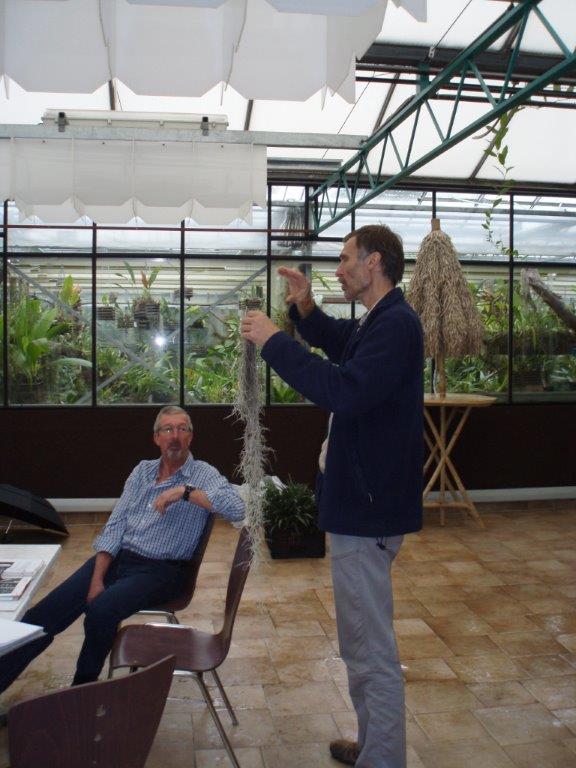
|
Everyone was then treated by Renate and Eric Gouda to a presentation about their travels in Peru the preceding winter. Beautiful pictures of the flora and fauna, the people, the children, the towns and the small villages, the mountains and yes ... naturally, the many bromeliads, gave the maximum of enjoyment to everyone there! This time Roel, as secretary, was the one to thank chairman Eric and his wife, on behalf of all those present, for their fascinating story and to accompany those thanks with wine and chocolates.
With this came an end to a fine contact day for our society and everyone left for home.
Text and photographs: Roel Tomassen
Editor: Eric Gouda
Translation: MaryRose Hoare
Bijgewerkt: 20140729, 4599 keer bekeken







 Home
Home